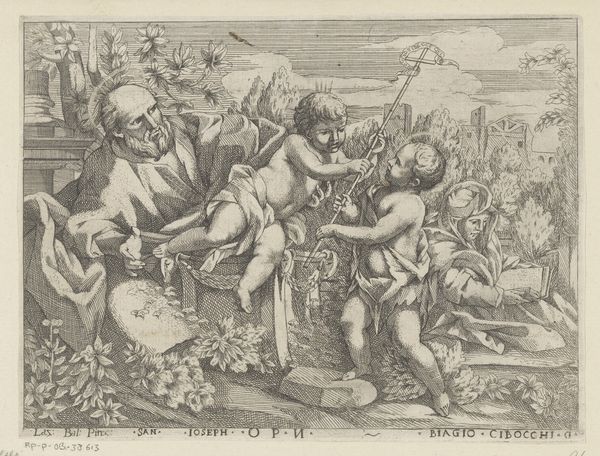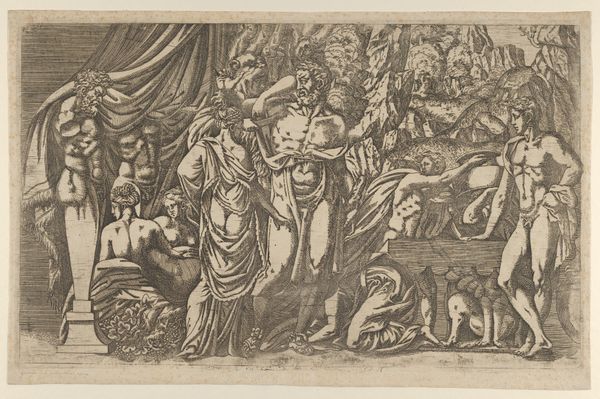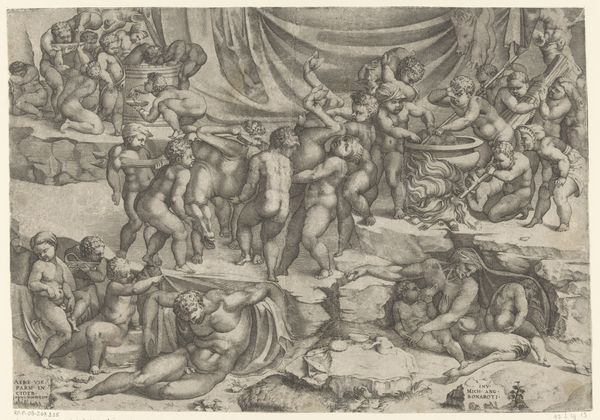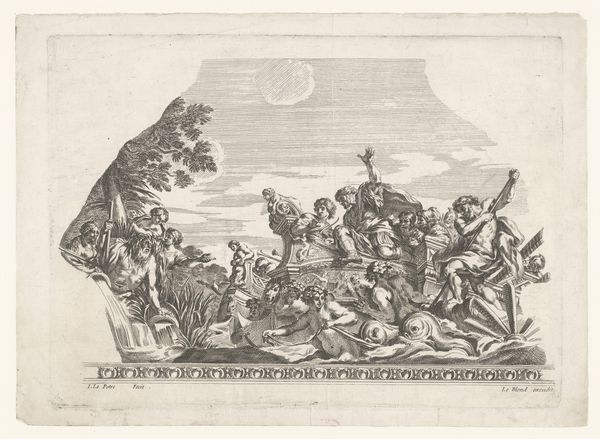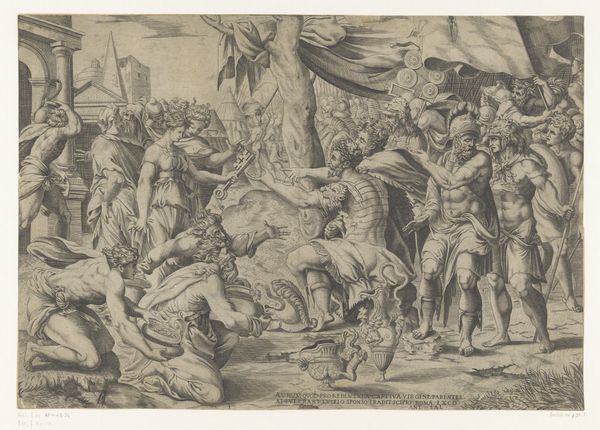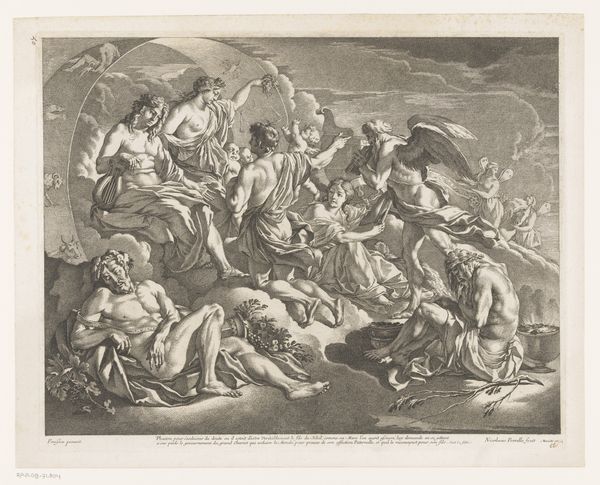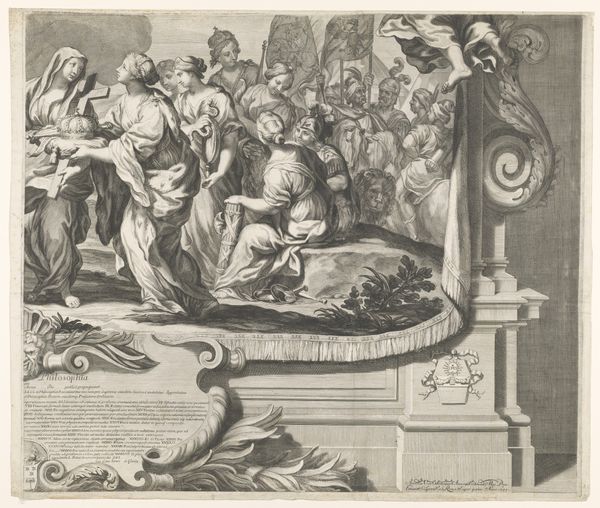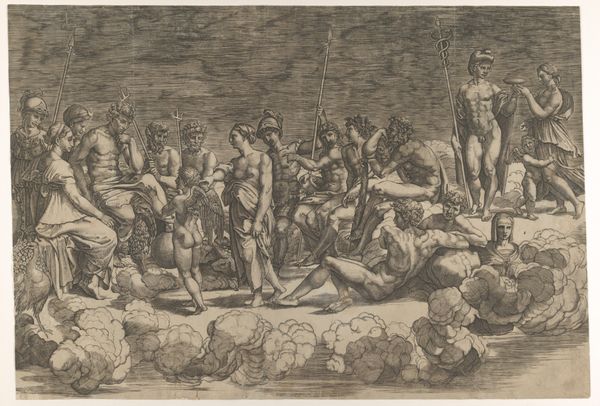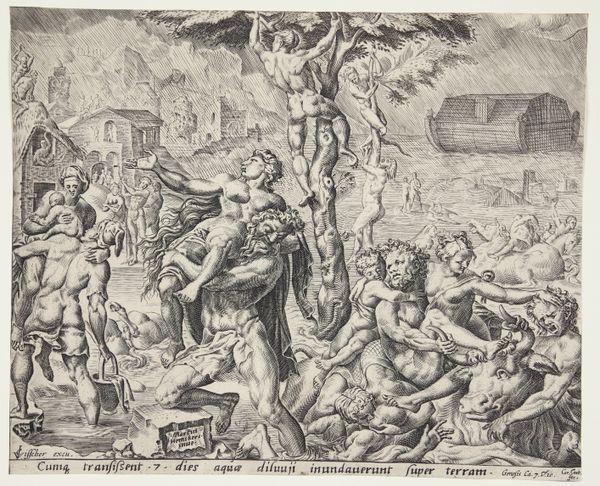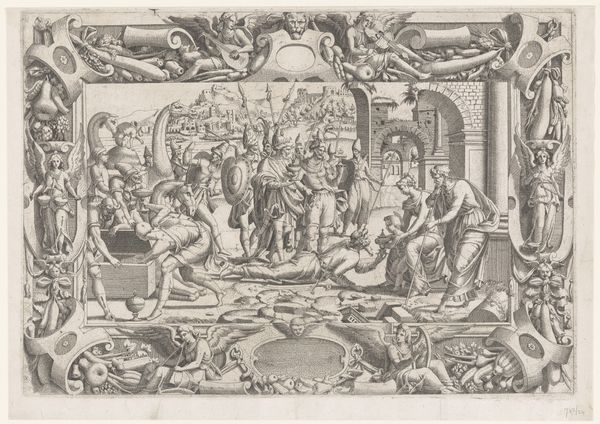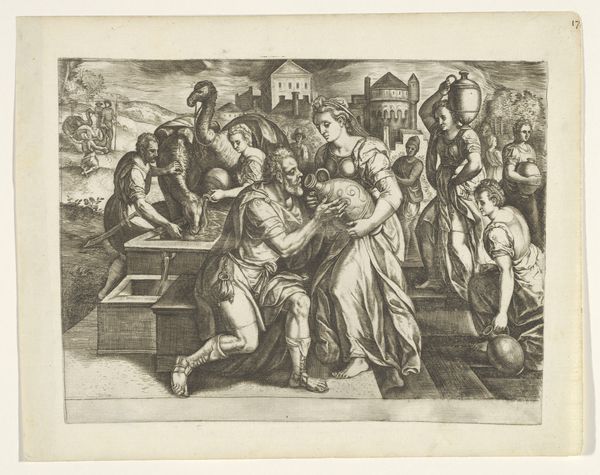
print, intaglio, engraving
#
allegory
#
baroque
#
pen drawing
# print
#
pen illustration
#
pen sketch
#
intaglio
#
old engraving style
#
figuration
#
line
#
history-painting
#
engraving
Dimensions: height 149 mm, width 215 mm
Copyright: Rijks Museum: Open Domain
Curator: This intricate engraving, entitled "Herfst" or Autumn, was created in 1592 by Antonio Tempesta. It’s currently housed here at the Rijksmuseum. What strikes you most when you first see it? Editor: The abundance! It feels like controlled chaos. There are so many figures and elements crammed into this space, yet the composition directs your eye through the scene. It's overwhelmingly symbolic. Curator: Absolutely. Tempesta was a master of imbuing his works with layered meanings. Let's consider the central figure. He’s a depiction of Autumn itself – lounging, seemingly intoxicated, on a grape-laden chariot pulled by goats. The materiality of the print is so interesting, allowing for such intricate detailing in the depiction of textures – the goats' fur, the weight of the grapes. Editor: The goats themselves are symbolic of earthly pleasures and sometimes, stubbornness. They pull the chariot forward, yet their nature suggests a lack of control. And look at the figures surrounding him, angels and even satyr-like creatures feeding grapes to the central figure as well. There's an interesting dichotomy of both abundance and also loss. Curator: It speaks volumes about the process. Intaglio printing like this relies on physical labor, a deliberate engraving process that transfers meaning through material manipulation. It’s not just about what is depicted, but how it was made and the social context of printmaking in the late 16th century that permitted these scenes of opulence. Editor: Right, it does present the bounty of the harvest season. Wine flows freely; the putti attend to Autumn’s every whim. It’s a visual representation of nature's yield but tempered by figures who attend the needs and desires in autumn. It is interesting as we look at these different allegories together to get a message and tone. Curator: Precisely. By delving into Tempesta's process and the social milieu of print production, we see "Herfst" as more than just an image. It’s an artifact of cultural attitudes toward abundance, labor, and the cycles of nature. Editor: Considering all these visual and historical elements together really illuminates the complex nature of autumn and all its many symbolic layers across the centuries.
Comments
No comments
Be the first to comment and join the conversation on the ultimate creative platform.
